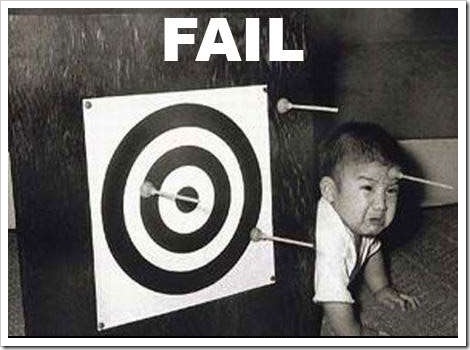Have you ever received a cold email that was so completely wrong and untargeted, you wondered how it ever wound up in your inbox?
As a cold email specialist, nothing makes me sadder than emails that lack an attention to detail. Sending cold emails addressed to the wrong name, or trying to sell me a product that isn’t even closely relevant to my business, is a waste of my time and yours. Outbound prospecting is incredibly effective, but if you’re not going to do your homework on your prospects, you shouldn’t be spending time and money on outbound.
Blasting out untargeted emails indiscriminately is only making yourself look like an obnoxious spammer.
Doing your homework doesn’t mean writing one-on-one emails for every prospect though either. In the era of mail merges, big data and predictive analytics, it’s easier than ever for you to write customized email templates that leverage the rich information in your database. How do you expect to gain your prospect’s trust and confidence from a cold email if you can’t even take the time to understand their business and send them a relevant message?
I’m on a crusade to save your inboxes from bad emails.
If you haven’t guessed already, this week my cold email critique focuses on the mistake of poor email targeting and segmenting.
Pay attention so your emails make it past the trash folder!
Cold Email Mistake #1:“Reconnecting” with Someone You’ve Definitely Never Met
“I understand you’ve connected with us in the past, at which point you might’ve been exploring *****. I wanted to circle back,”
It’s fine to reconnect with potential customers that have shown interest in your company or product in the past, but make sure your prospects have actually reached out to you before.
I’ve never connected with this company, and I definitely haven’t been exploring any of their products. I’m not sure where they retrieved my contact information from, but considering they didn’t even use my name correctly, it was probably scraped or bought from a random list.
While social engineering and hitting people from a conference list sometimes works, there is a right way and a shady disingenuous way to do it. If you’re going to “reconnect” with a prospect, make sure that your information is coming directly from that stack of business cards on your desk or from your company’s database.
Screwing this up risks turning off your prospects from your business entirely.
COLD EMAIL PRO TIP #1: If you are trying to target prospects you’ve never met from an event list or other source, you should email them saying something like,
“It looks like I missed you at {!Conference}. I had hoped we could have met because I really wanted to learn more about {!Company}’s business and how you’re scaling your sales team.
I have an idea that I think could dramatically increase {!Company}’s sales productivity that I’d like to share with you. The same idea helped {!Client} double their sales revenue in Q3.
When do you have time for a quick call?
Cold Email Mistake #2: Poorly Targeted Prospecting List
“Perhaps we can schedule some time to detail ******’s added capabilities from a technical perspective and see if they align with the business issues you’re looking to solve?”
The goal of your cold email campaigns is to reach prospects that you’ve never met to set an appointment for a call or demo. However, if you’re blasting out messages from a broadly or untargeted list you won’t be very effective. Sending out mass emails from random lists is like throwing spaghetti at a wall and hoping it will stick.
Don’t blindly ask your prospect what their issues are; it’s lazy. Although it’s acceptable to ask questions related to their pain points, it’s your responsibility to have an understanding of your buyer persona’s pain point and needs before you build your email campaign. Effective cold emails should demonstrate that you understand your prospects’ problems and how to solve them. This is how you build trust and credibility.
Unless you already have a highly targeted list with a laser focus, sending the same email to all your prospects is lazy and will burn valuable contacts. It’s important to filter your list by the buyer personas and build your email campaigns to be relevant to each persona. Sending the same email to a VP of Sales as a CTO probably doesn’t make sense. At best, you’ll end up with one highly effective email and another that is entirely ineffective, but chances are your emails won’t be very effective for either persona if you were too lazy to personalize your message to the recipient.
COLD EMAIL PRO TIP #2: Build detailed buyer/customer personas before creating your email campaign to ensure that you’ve created a persuasive personalized message. Put yourself in your prospects shoes.
PS: If you’d like to learn more about cold email best practices or would like to have your own email critiqued, please join me with RingLead and their CEO Donato on for a webinar on Thursday November 20th at 2pm EST.
As always, if you have some terrible cold emails sitting around in your inbox that you’d like to share with me to anonymously critique, please shoot an email to Haley (at) Salesfolk (dot) com. (If you’re up for it, I’ll even give you a free critique of your own email on here anonymously!)





